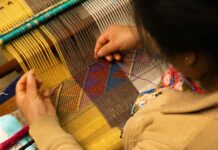 My children did not share my enthusiasm when I announced we would be working on etiquette this summer. In fact, etiquette is probably the last thing they want to work on. The word “etiquette” may conjure up images of white gloves and garden parties. They probably imagine that they will be setting out lace doilies and dessert forks every day. I do love a nice tablescape, but my intent to work on etiquette with my children goes far beyond setting a proper table. I really want to reinforce respectful behaviors and treating others in a way that makes them feel valued and comfortable. And yes, manners are a good first step. Merriam-Webster defines manners as, “social conduct or rules of conduct as shown in the prevalent customs.”
My children did not share my enthusiasm when I announced we would be working on etiquette this summer. In fact, etiquette is probably the last thing they want to work on. The word “etiquette” may conjure up images of white gloves and garden parties. They probably imagine that they will be setting out lace doilies and dessert forks every day. I do love a nice tablescape, but my intent to work on etiquette with my children goes far beyond setting a proper table. I really want to reinforce respectful behaviors and treating others in a way that makes them feel valued and comfortable. And yes, manners are a good first step. Merriam-Webster defines manners as, “social conduct or rules of conduct as shown in the prevalent customs.”
Unfortunately, it seems that our society is going in the opposite direction of proper social conduct.
It doesn’t take more than five minutes on social media to see that adults are not setting a good example of how to treat each other. Civil discourse has given way to hostile arguments and kindness has given way to name calling. Politeness is mocked and rudeness is embraced. It can get ugly out there, but it doesn’t have to be ugly in my home.
Like many parents, my husband and I have been trying to teach our children manners from an early age. We started with “please” and “thank you,” learning to share, and treating others with kindness. We have tried to emphasize “yes ma’am” and “no ma’am” and “yes sir” and “no sir” as signs of respect and we look for ways to be courteous to others. But even with the best intentions, it can be hard to remember manners. I am far from perfect and I don’t expect perfection from my children. We are also all so busy that it can be hard to take the time to really enforce proper etiquette. But I know I’m not alone in my belief that manners matter. So, I decided to be more intentional about training in these skills.
I purchased an etiquette curriculum that we will begin working on this summer. We will start with the beginner level designed for preschoolers through 4th graders, but the program also came with intermediate and advanced levels that can be used through high school. Yes, it covers table manners, but it also includes lessons on showing respect, greeting people, showing kindness, cleanliness and hygiene, and introducing skills for successful academic or professional interviews.
So, how am I going to implement this etiquette training?
I plan to add it into our daily routine. The program came with a workbook as well as a DVD, which the children can watch in the car on the way to various camps and summer activities. Having it in the car should be a good way to reinforce the lessons and I love the idea of having a captive audience. I am excited to work on this together and I hope it will end up being a fun way for all of us to learn.
We may not follow the program exactly, but the good part about doing it at home is that I can adapt it in a way that will work for our family. Will this turn my children into perfectly coifed angels who never have an etiquette faux pas? As much as I would like to believe that to be true, I know it won’t be. But I do want to do my best to equip them with as many tools as I can. Etiquette is something that is free, but also priceless. Even if my children don’t thank me for encouraging them to practice good manners, I hope those around them will appreciate it.




















Can you share the name of the curriculum you are using? I would love to implement this with my teen girls!
Hi, Jessica. Thank you for your comment. We are using Etiquette Factory. Check out the website for different levels.